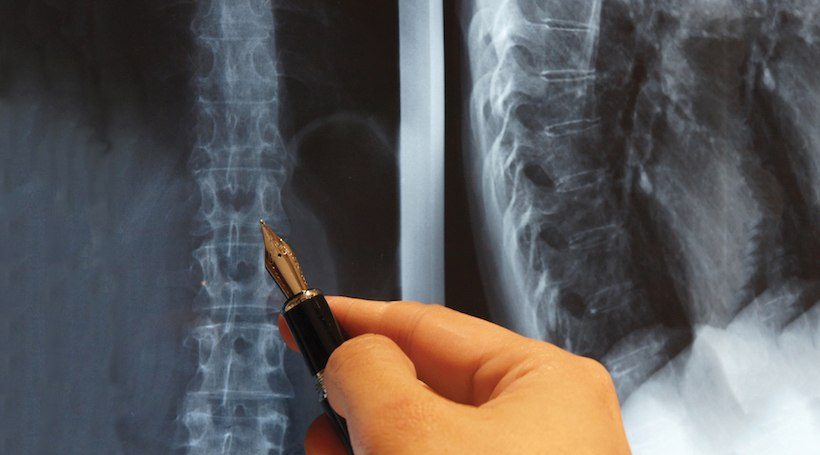For years, many patients have enjoyed the benefits of minimally invasive surgery, including a quicker recovery with less pain. But there were limits to the types of surgery that could be done with small incisions and even smaller instruments. Those days are gone, however, as surgeons can now perform a wide variety of procedures through the smallest of openings. For Runnemede’s Loretta Collazo, that’s been a life changer.
Collazo, 41, endured nearly 10 years of agony, as severe abdominal and pelvic pain, accompanied by unusual bleeding, plagued her as she tried to go about her day-to-day tasks.
But today, after all those years of pain, Collazo says she feels “like a whole new person.”
Her new outlook on life is thanks to a robot-assisted, minimally invasive hysterectomy. Collazo says three fibroid tumors in her uterus were wreaking havoc on her health, but this fall, she underwent the procedure that has changed her life. “I feel 110 times happier than I ever have,” she says.
One of the benefits of the minimally invasive surgery is that it only requires small, half-inch incisions – much more attractive to Collazo than having her entire abdomen cut open. Special tools allow the surgeon to detach and remove the uterus through the small opening.
“A small incision means you’re not in the hospital long,” says Kenneth Covone, DO, Collazo’s physician at Kennedy OB/GYN Associates. “The recovery is a lot quicker, and patients are able to get back to doing their regular activities.”
Collazo says she went into the operating room around 7 that morning and went home after the procedure. She even made dinner for her family that night. She tells a story of being thirsty a few hours after her surgery, and the nurse offered to go get her a drink, but Collazo wasn’t having it.
“They wanted to take care of it, but I was like, ‘I’m more than capable of getting off my butt and doing it myself,’” she says with a laugh. “I left within 24 hours.”
Covone says this speedy recovery time and satisfaction with the decision to undergo surgery is a common response in his patients. “Every single patient I’ve had has said, ‘I would recommend it to everybody.”
However, that doesn’t make every woman a candidate for a minimally invasive hysterectomy, Covone warns. Patients with a large uterus, too many fibroids or lots of scar tissue from a previous cesarean section or additional abdominal surgery may not be able to have the procedure done minimally invasively.
For patients who are good candidates, though, the results can be life-changing.
“If I could have had this done 10 years ago,” Collazo adds, “I wouldn’t have hesitated.”
Healing Hearts
Open heart surgery has been saving lives for decades, but it has always carried serious risks as doctors divided the breastbone and exposed the heart. Today, some life-saving heart procedures can be done with a minimally invasive approach, greatly reducing those serious risks.
For patients diagnosed with aortic stenosis – where the aortic valve in the heart narrows, restricting the valve’s ability to pump blood through the body – surgeons can now replace the diseased valve with a minimally invasive approach. The revolutionary technique has greatly decreased the medical risks for patients with the disease, and its success has resulted in widespread use.
“We’re slowly starting to use it in half the patients who used to have open-heart surgery,” says Howard Herrmann, MD, director of Penn Medicine’s interventional cardiology program.
During the procedure, called transcatheter aortic valve replacement (TAVR), the surgeon makes a small incision in the groin and threads a catheter through an artery to deliver a new self-expandable valve.
Though Penn has only been doing TAVR since 2007, Herrmann says the procedure has crossed into mainstream therapy for cardiology issues. At Penn’s Philadelphia hospitals, TAVR has been performed approximately 1,700 times.
Though TAVR is not available to all patients – high-risk and intermediate-risk are the most likely to have the procedure – it is revolutionary for those who need it. But Herrmann does note that Penn is currently conducting a trial for low-risk patients.
Like most minimally invasive procedures, recovery is much quicker for TAVR patients, too. Though they’re sedated, they don’t have to undergo general anesthesia, and there’s no major incision – just a small puncture in the groin. On average, most TAVR patients stay at the hospital about two days, Herrmann says, but a number go home the next day.
“With open-heart surgery, you’re talking seven to 10 days in the hospital,” Herrmann adds. “And then there’s still a lot of recovery at home. But with TAVR, there’s just a little puncture in the groin. No cutting, no knives involved. It’s a truly transformative procedure.”
Saving Spines
Spine surgeon Steven Kirshner, MD, knows if people had a choice, they would not choose spine surgery. But he also knows that people want to be physically active – no matter their age – and pain can put a stop to that.
“Even when people retire, they want to travel, they want to do this, they want to do that,” he says. “Their level of physical activity escalates.”
But when pain affects a patient’s quality of life and the ability to work, Kirshner says it’s time for them to step inside the doctor’s office. Back pain can be particularly pesky – and common – but nothing about spine surgery is appealing to most people, he adds.
But back pain is often a mechanical issue that needs to be treated surgically,
Kirshner says. Lumbar spinal fusion surgery, he explains, can help alleviate a great deal of pain by stopping motion at the segment of the spine where vertebrae are rubbing against each other.
When Kirshner was first trained in spinal surgery, a fusion like this was a major surgery – a 6- to 8-inch incision, weeks spent in the hospital recovering (usually in a full-body brace) and an even longer recovery period until the patient was back to normal. But today, a minimally invasive procedure brings the same results with much easier recovery.
Most of Kirshner’s fusion patients go home the day of the surgery, he says. The incisions are a lot smaller, and muscles are split with a device that goes with the grain, instead of tearing fibers apart. There’s still screws and rods going into a patient’s vertebrae to stabilize the spine, but the procedure can be done through small incisions and punctures.
“People hear about the rods in their back, the other parts of spine fusion surgery,” Kirshner says, “and they come to me for a second opinion. They tell me someone else was going to make an incision in their belly, in their back, and they’d be in the hospital for three days.”
But when he tells people he can do it with two small incisions and then they will likely go home that day?
“That’s the biggest wow that shocks people,” Kirshner says. “We’re on the forefront of spine surgery, and I think we’re going to see a lot more new technology like this in the next 10 to 15 years.”














